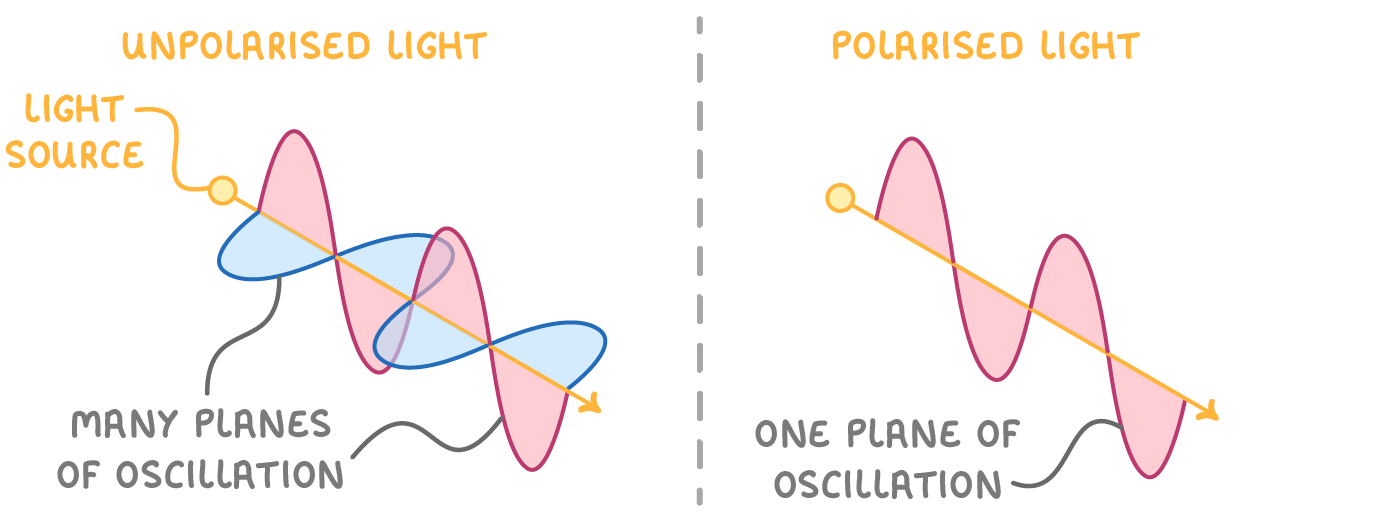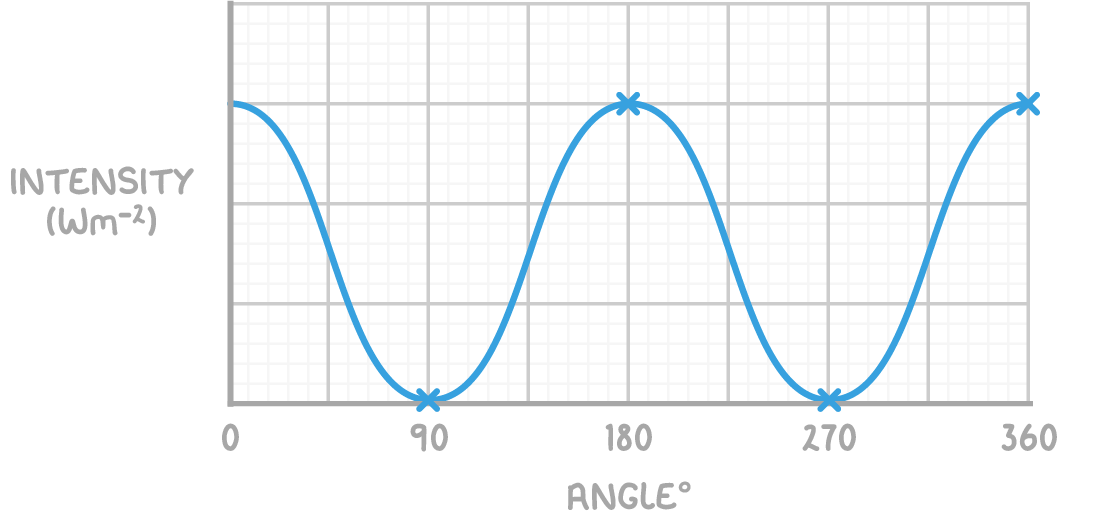Polarisation
This lesson covers:
- Definition of Polarisation of Waves
- Characteristics of Plane Polarised Waves
- Investigation of Light Polarisation using Polarising Filters
- Polarisation in microwaves
What is Polarisation of Waves?
Polarisation is a process affecting waves, such as light and radio waves, where their vibrations are restricted to a single plane perpendicular to their direction of energy transfer. This contrasts with unpolarised waves, which vibrate in multiple planes.

Plane Polarised Waves
Plane polarised waves are those that vibrate exclusively in one direction. This unique property has several key aspects:
- Plane polarisation is specific to transverse waves, such as light waves, distinguishing them from longitudinal waves.
- Natural light has many planes of vibration.
Polarising waves
- A polarising filter selectively transmits waves that vibrate parallel to its alignment axis and absorbs or reflects waves in other orientations.
- When two polarising filters are positioned at right angles (90°) to each other, they completely block light, demonstrating the directional nature of polarisation.

Investigating Light Polarisation
Light polarisation is best studied using two polarising filters in a step-by-step process:
- Position two polarising filters vertically and shine unpolarised light, like sunlight, onto the first filter.
- This filter polarises the light vertically, aligning the light's vibration direction with the filter's transmission axis.
- When the second filter is aligned similarly, it allows all the vertically polarised light through.
Image to show both polarising filters aligned and allowing the vertically polarised light through.
- Rotating the second filter gradually decreases the intensity of transmitted light, showcasing the effect of changing polarisation directions.
- A complete 90° rotation results in no light transmission, while at 180°, the filters are realigned, and full light transmission resumes.

This experiment vividly demonstrates how polarising filters are selective to light vibrating parallel to their transmission axis.
Polarising Microwaves
Unlike light, microwaves require different techniques for polarisation:
Microwaves are polarised by passing through a metal grille, where wires are aligned parallel to each other.
- The maximum transmission of microwaves occurs when the grille's wires are perpendicular to the microwaves' polarisation direction.
- Rotating the grille alters the microwave's ability to pass through, with a corresponding change in voltmeter readings indicating varying degrees of polarisation.
- At a parallel orientation (grille wires parallel to microwave polarisation), the grille effectively blocks all microwave transmission.
This process demonstrates the principles of microwave polarisation and how metal grilles, analogous to polarising filters for light, can be used to control it.